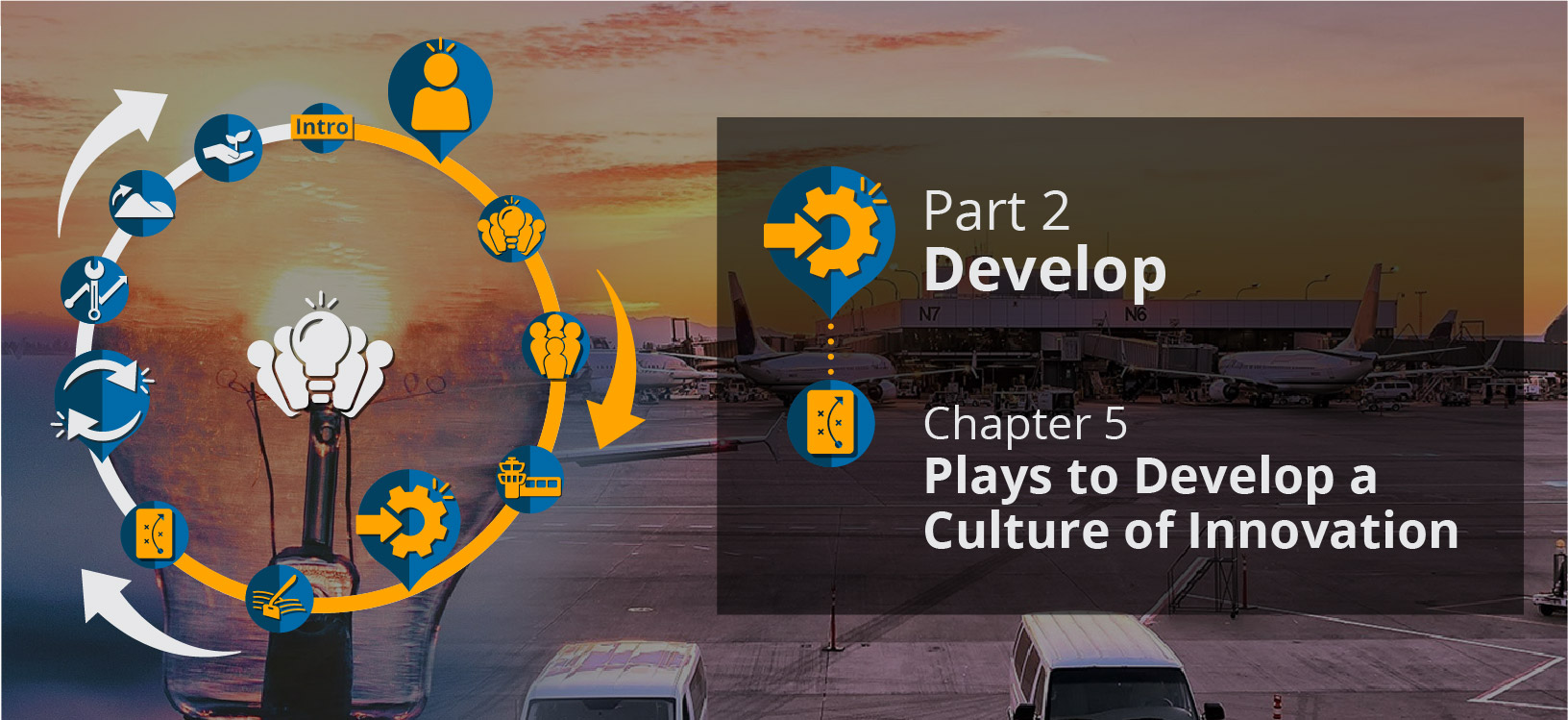

This is a Deep Dive page. Select the chapter for the Fast Track
Play 21: Discover What Motivates Employees (Process & Procedure)
Innovative leaders are intentional about learning what motivates their employees. This helps them develop the most meaningful incentives for their employees-incentives that will inspire them and enable them to contribute to a new culture of innovation. Leaders also take the time to understand how employees want to be recognized for their innovation contributions.
Innovative leaders
- Reward inspirational ideas. Research has determined that while incentives can come in the form of bonuses or one-time cash payouts, people are not always motivated by money alone. People may also enjoy getting time off, training, a good parking spot, or a “day in the life” of another employee. In fact, positive feedback and recognition from leadership is essential for employees to feel like their job matters. This goes a long way for the individuals and can reflect well on the leader. Airport swag like polo shirts, insulated water bottles, and backpacks can help staff feel connected to the innovation cause without spending a ton of money, and selfies or short videos of team members highlighting their innovations and then shown on digital screens in the airport can make any employee feel like a rock star.
- Take the time. Consider the makeup and diversity of staff members and how that might translate into motivation for each of them. Seek out individual perspectives when considering how to tailor rewards for their teams. Make time to understand generational differences and how inspiration may look different for each generation. As the industry continues to change and older generations retire, focus on understanding what motivates young professionals so the airport can attract and retain them. Everyone wants to have value in the work they accomplish, whether they are a baby boomer or part of Gen-Z, or anyone in between. Being connected to what's important to each generation can greatly enhance a leader's success in acknowledging each person's contribution. More information on this topic can be found in Chapter 7 and Chapter 8.


